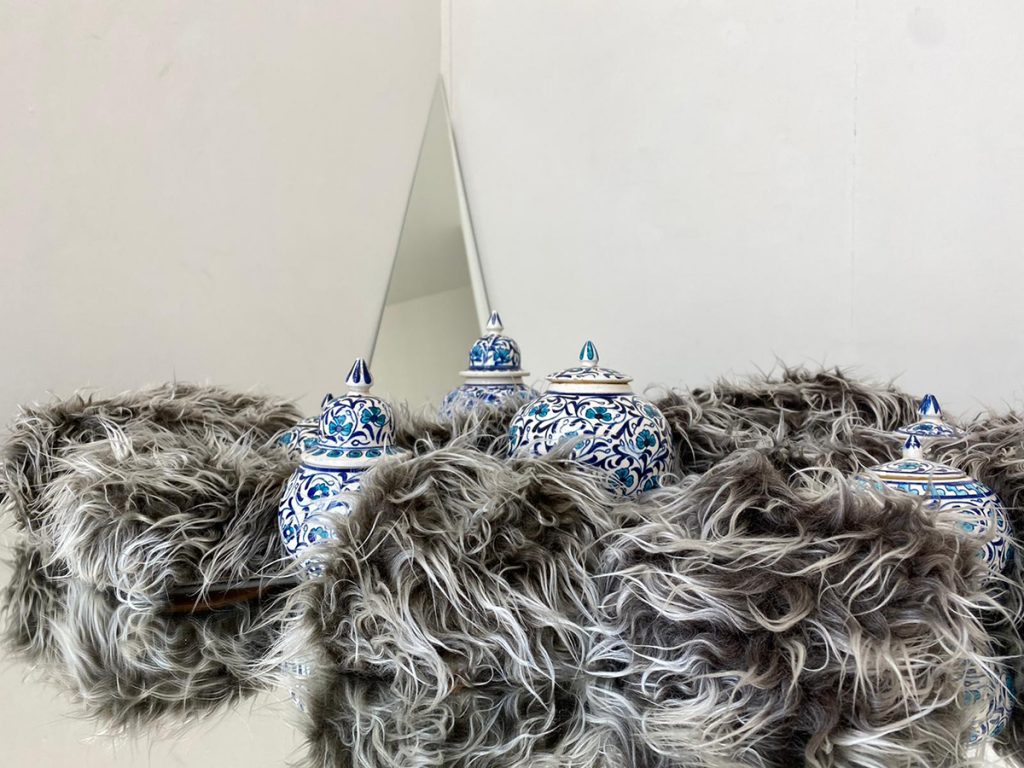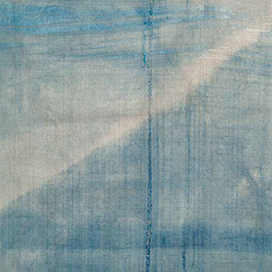
The Haptyc Eye
Curated by Mark Gisbourne
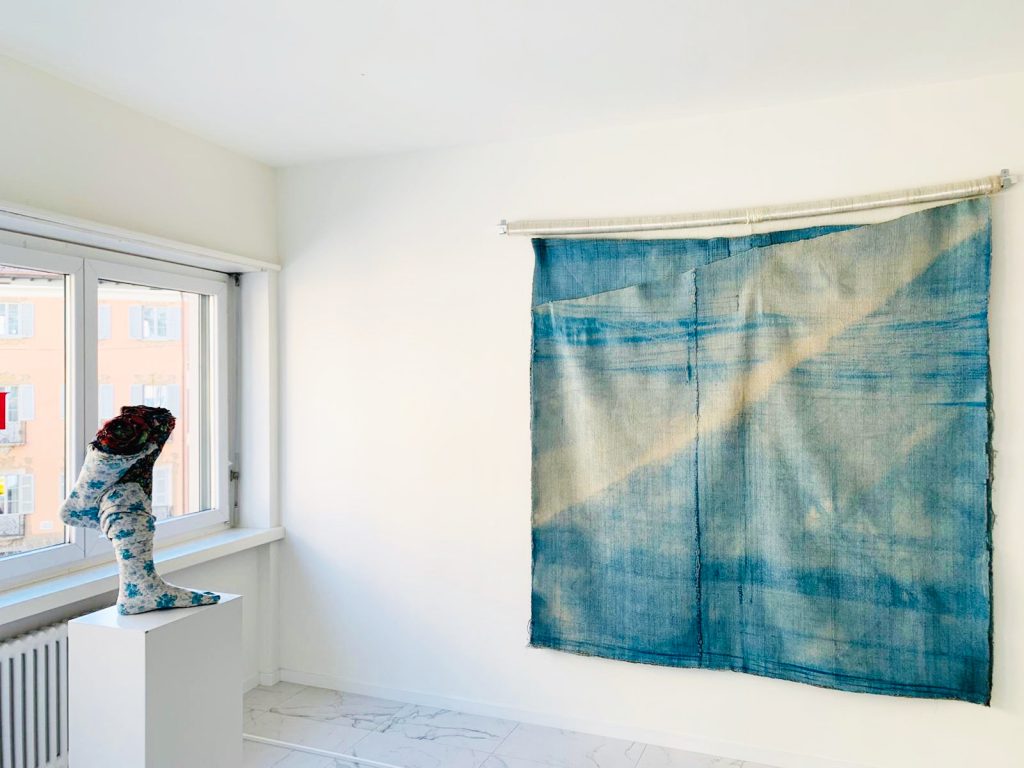
From 15 October to 18 2020
Piazza Cioccaro 7, Lugano
Via Gorani 8, Milan
Galleria Allegra Ravizza in collaboration with Diehl Gallery is pleased to announce the show “The Haptic Eye” curated by Mark Gisbourne, a physical exhibition of an undertaking presented virtually at both the Art-Circle platform and the London art fair, Frieze 2020.
A double exhibition that both the Lugano and Milan galleries will open on 14 October 2020, “The Haptic Eye” is a group show by the artists:
Charles Chamot
Birgit Dieker
Ritzi & Peter Jacobi
Klarà Birò Jecza
Jolanta Owidzka
Günter Weseler
Magda (Vitalyos) Ziman
The show’s aim is to deepen and amplify the research into the visual and tactile perception that we feel in front of forms, colours, and materials that allow us to understand how aesthetic experiences derive from a profound link between the eye, our brain, and our body.
With the Avant-gardes of the 1950s the study of new materials became of central importance because this was necessary for what was the great ideological and conceptual change in contemporary art, from industrial materials to engines and artificial light, which before had not been part of artistic use but which now erupted into works of art. Every material, thanks to its diversity, possesses specific potentials that we perceive on the basis of our sensations and experiences. The very research into light became a methodical automatism about materials. Fabrics, wool, natural hair, as a result of their intrinsic characteristics, react differently to light, modifying and transforming themselves.
From the 1950s onwards, fibres abandoned their link to craftsmanship to enter rightfully into the world of art in various guises. They acquired three-dimensionality, allowing the work of art to enrich itself with a series of sensorial qualities that before would have been impossible to perceive.
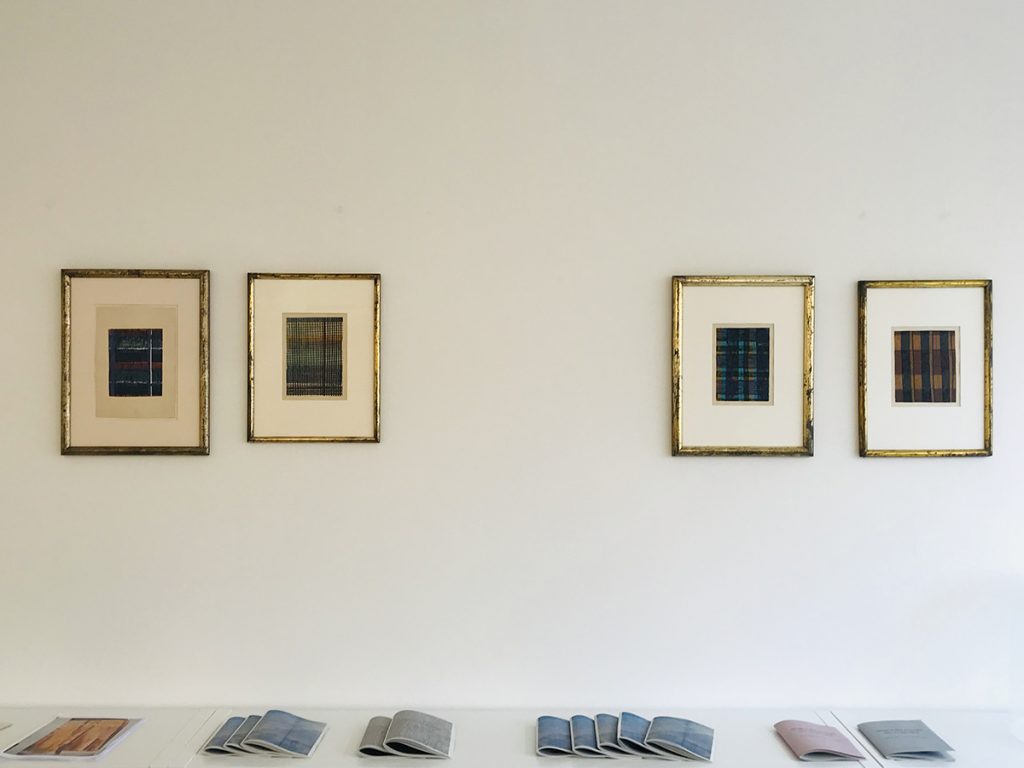
Smoothness, elasticity, softness are only represented in the fabrics and weaves of art history, such as in Cosimo Tura, Titian, and Tiepolo where, almost like a Platonic idea, they become real in their exactness through the representation/idea of colour and our emotional memory.
Fabrics, fibres, and cords allow these artists to create new structures with knotting, twisting, interweaving, wrapping, folding, anchoring, and intertwining. They have explored the qualities of the fabrics in order to develop works that can be two- or three-dimensional, flat or volumetric, of any size or dimension, non-objective or figurative.
These artists at times deal with the challenge of the message or meaning of a work of art that is accompanied by the study of materials and that is utilised to create an indissoluble union with the material itself. Such works undermine traditional ideas by showing how the development of an artist linked to technical evolution and the discovery of new materials continuously evolves despite the fact that the fabrics have their roots deeply in a millennial history.
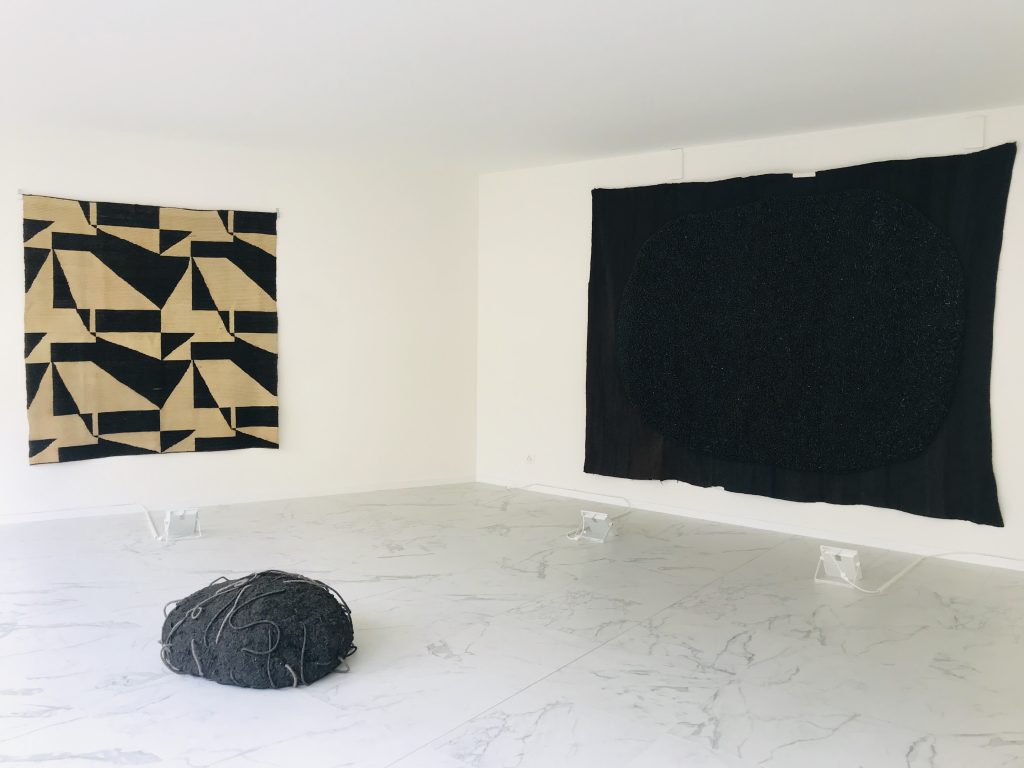
BIOGRAFIE
Charles Chamot was born in 1951in Lima, Peru, and is an established American painter, designer, graphic artist, and gallerist. Chamot creates abstract and realistic works that reflect a passion for shape, color and social context and a fascination with art’s reflection of relationship, experience and memory. He was primarily influenced by the 1970s and he processes art combining elements of conceptualism with other formal considerations, creating mysterious and experimental bodies of work. Expressive figurative painting began to regain importance for the first time since the decline of Abstract Expressionism.
Scores of his paintings, prints and tapestries are held in private and corporate collections worldwide.
Birgit Dieker was born in Gescher, Germany, in 1969; she now lives and works in Berlin. Strongly influenced by the turbulent changes of the 1980s, characterised by an increasing global capitalism, the birth of the mass media, and strong social and economic discrepancies, she makes sculptural, potentially abject, works that challenge the way in which female identity has been imposed by the historically dominant patriarchy. By going beyond the traditional aesthetic linked to the female nude and the suppression of female desire by social convention, Dieker stratifies and cuts up used clothes in order to explore bodies that take on singular and fragmented forms. Her works ask to go beyond the objectivised body of women by becoming free in a new body, totally invented, in search of a self hidden under layers of personal experiences, stories and lives.
Peter (Ploiesti, 1935) and Ritzi (Bucharest, 1941) Jacobi met as textile and sculpture students respectively at the Art Academy in Bucharest, marrying in 1966. Until they went their own way in the 1980’s, they collaborated on textiles while developing other separate practices. Their relief tapestries make new experimental and sculptural forms inspired by the Romanian traditions of finely woven blankets, flags and wall hangings and medieval religious embroidery. Anni Albers identified a particular tactility in textiles, arising from how what you see is a direct consequence of the material’s make-up: the Jacobis heighten the effect, often adding contrast by integrating paper and adding to the surface texture by weaving in non-traditional elements such as woven boxes, thick cords, and pieces of wood.
Klarà Birò Jecza is a Romanian artist in 1937. The themes of her tapestries are taken from the vegetable world of fruit and are born from the artist’s preoccupation to overcome the pure decorativeness of the form, its purely ornamental function, and to give it added value through spiritual and sculptural implications. The colour range she uses is austere: black, white, earth colours, tenuous tones. This chromatic severity, which we could in fact describe as ascetic, communicates with the weaving technique to purposely give smoothness to the flat forms.
Her art becomes a physical expression of her state of mind, halfway between a rational constructivism and balanced aesthetic principles. The large tapestries by Klarà Birò Jecza testify to an attachment to the values of popular creation, preserving the natural colours of wool – a noticeable preference of the artist – and the evolution of the design towards a certain kind of geometry and strong stylisation.
She died on 10 October 2011.
Jolanta Owidzka was born in Radom, Poland, in 1927 and studied at the State Higher School of Fine Arts in Krakow, and then undertook further studies at the Warsaw college of art where she followed the weaving and textile course. Textiles remain the main area of the work by Owidzka. Her output includes knotted rugs characterised by an irregular design and by depth of colour, obtained through the use of many and different tonalities. The artist created her kilim rugs according to the rules of abstract painting, renouncing axial composition and laying out the marks of colour according to the grid of graphic division and enriching them with stripes of the same colour but of a different intensity. She mainly used sheep’s wool, not only for her rugs and carpets, but also for her jacquard weaves, together with linen. The artist had her first solo show in July 1960 in Zachęta and this was considered a moment of change for the art of weaving in the panorama of contemporary Polish art. With Owidzka weaving went beyond the confines of artistic artisanship and became a genuine art of contemporaneity. As well as exhibiting in various Lausanne Biennales (Fiber Art), she took part in important international shows and events, among which the prestigious show Wall Hangings at the Museum of Modern Art, New York (1968–1969). In total the artist created more than fifty monumental weaves in the period 1964-2005 for public buildings – theatres, concert halls, hotels, banks, and offices. Jolanta Owidzka died in Warsaw on 25 March 2020.
Günter Weseler was born in Allenstein, Poland, on March 2nd, 1930. After obtaining the Diploma in Architecture, starting from 1958 he worked as a self-educated painter and sculptor and in 1960 he presented his first solo show at the Utermann Gallery in Dortmund (Germany).
In 1964 he created the first Atemmusiken (music of breath), from here he began a series of works based on the phenomenon of the breath converted into music that will later lead to the creation of Atemobjeckte (breathing objects) by studying the changing relationships between them, their position in space, place and situation.
In the eighties his work is characterized by a greater attention to the spiritual element and draws on the rituals and figures of the Mandala, magic circles, ritual symbols of unity. Between 1989 and 1993 he was a guest as Professor at the Hochschule in Hamburg. The first Moosobjekt (objects with moss) and Mirror-Objects in which the concrete and virtual element interact, date back to the 1990s. The works of Günter Weseler are present in numerous museums and collections including: the Düsseldorf Museum of Art, the Bremen Kunsthalle, the Sydney Museum of Contemporary Art, the Atheneum Museum in Helsinki, the Bern Museum of Art and the Institute for International Relations in Stuttgart.
Magda Vitalyos Ziman of Hungarian origins, was born in 1942 in Romania. A teacher and artist, she is known for her tapestries and rugs. From 1990 onwards she was at the head of the textile department of the fine arts faculty of the Western University in Timisoara, and temporarily vice president of the faculty of design at the Tibiscus private University, giving life to a “school” of Romanian textile art. Besides the traditional techniques of tapestry weaving, she cultivated the creative processes and genres of modern textile art with great zeal and ability. Her works inquire into the use of materials, space, light, and colour through the use of highly personal organic abstract forms made from textiles. Ziman’s fascination with such natural materials as wool, and the creation of two- or three-dimensional tapestry-objects makes them fully part of a new vision of soft sculpture. She died in 2003.
